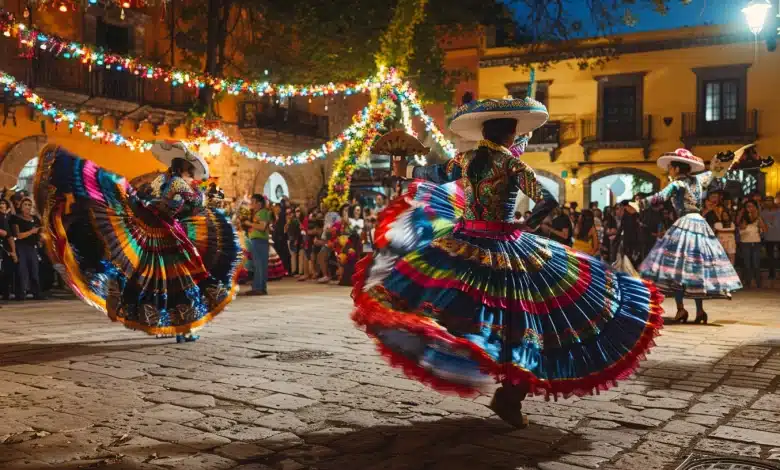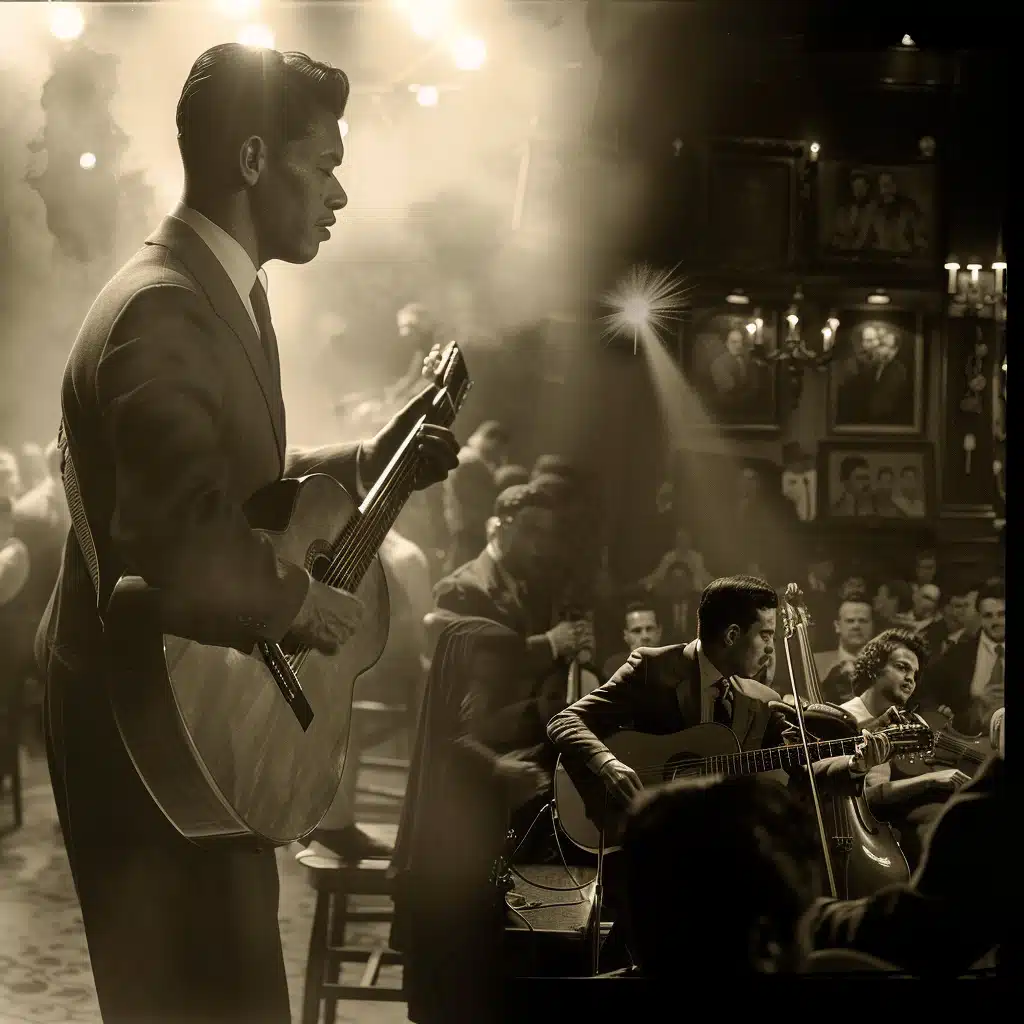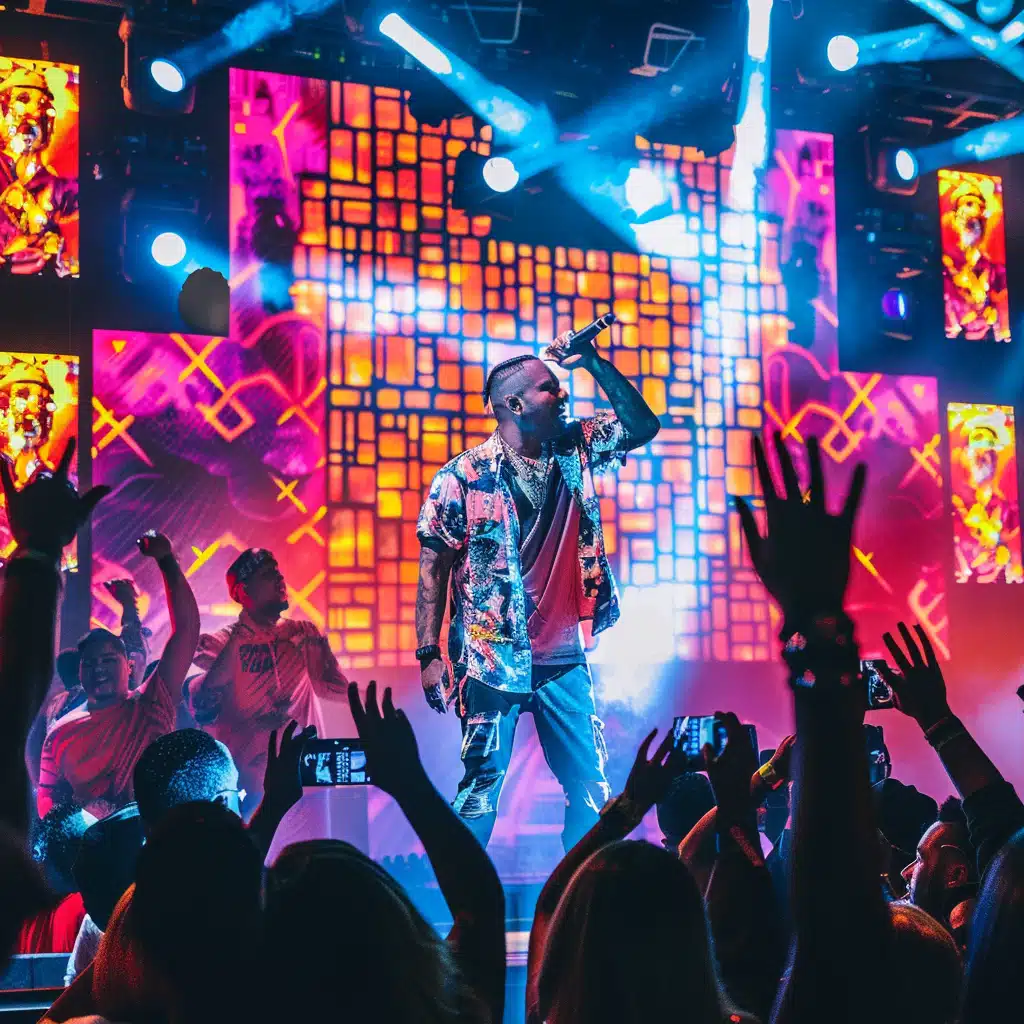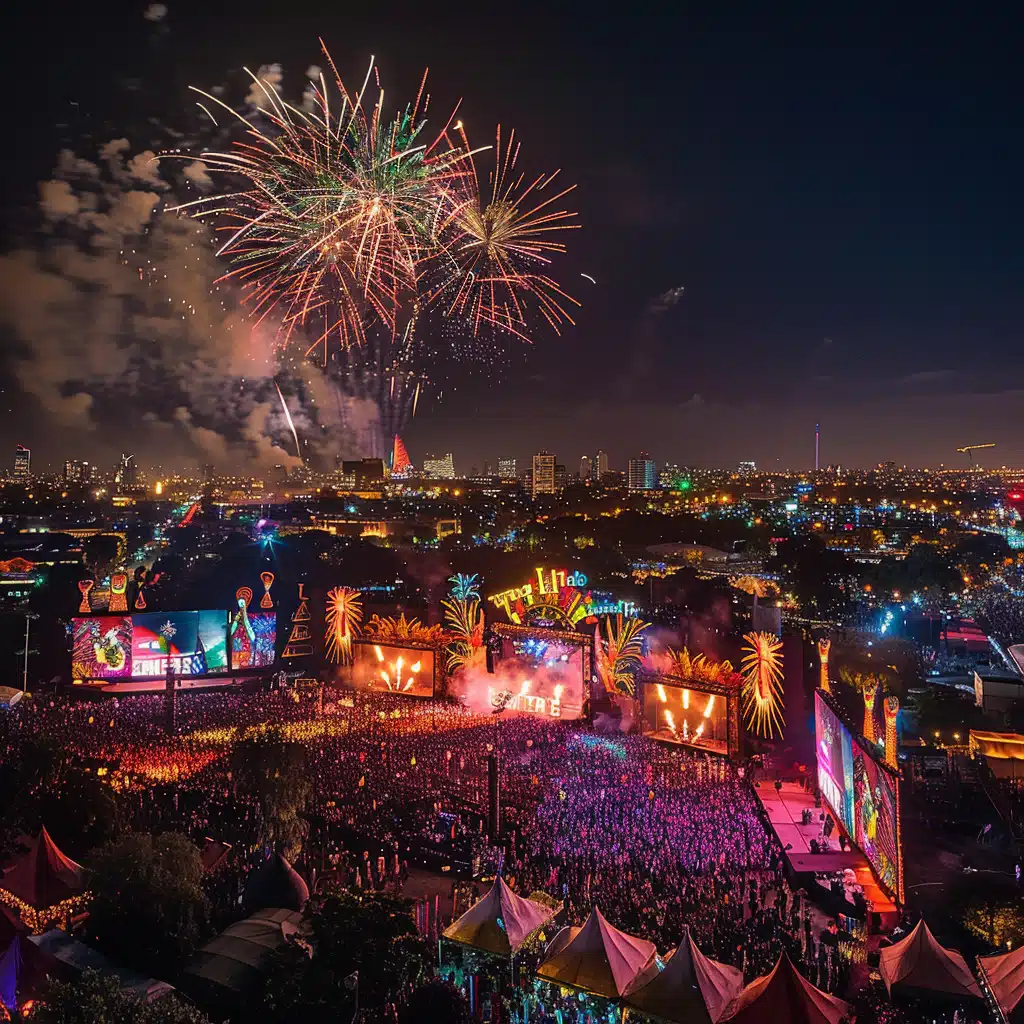
How Latino Pop Music Evolved from Bolero to Reggaeton
Bienvenidos, familia! Today, we're taking an musica-fueled journey through el corazón of our culture, exploring “The Evolution of Latino Pop Music From Bolero to Reggaeton.” It's a vibrant crescendo from the sultry strings of classic bolero that set our abuelos' hearts aflutter, to the pounding beats of reggaeton that have the whole mundo dancing. How did our cherished bolero evolve into today's reggaeton? ¡Vamos a descubrir!
We're starting way back, where the melodious origins of Latino music planted the semillas for what's topping the charts hoy. We'll uncover how amor-filled ballads transformed through los años, and how artists like Shakira shook the pop musica scene with Latino sabor. Get ready to nod your head to the reggaeton beat and find out how these ritmos have taken over globally. And, claro, no podemos forget about the digital revolution—streaming these tunes right into nuestras vidas. ¿Listos? Let's dive into the history and sizzle of our musical roots, from bolero music origins to the reggaeton revolution. ¡Qué emoción!
What Are the Origins of Latino Music and How Have They Shaped Today's Genres?

The roots of Latino music are as diverse as the cultures it sprang from, with a rich history influenced by a blend of Indigenous, African, and European elements. At its core, el bolero, which originated in Cuba in the late 19th century, laid down the rhythmic heartbeat that pulses through many contemporary Latino music genres today. Classic bolero singers, with their soulful and melodic delivery, set the stage for the evolution of Latino pop music, weaving through the narrative of Latino history and culture.
What led to the creation of bolero music?
The bolero genre was born out of a fusion of Spanish musical forms and Afro-Cuban rhythms, encapsulating the essence of romantic sentiment and longing, which would become a defining characteristic of many Latin ballads.
As it spread beyond Cuba's borders, it encountered other musical traditions, absorbing and reshaping them. By the mid-20th century, bolero had evolved and found its way into the repertoires of artists across Latin America and beyond. It's not an exaggeration to say that modern Latino pop genres, from salsa to reggaeton, carry the DNA of bolero in their chord progressions and lyrical themes.
Exploring the classic bolero's influence further, legendary singers like Beny Moré and Lucho Gatica brought emotional depth and passion to their performances, enchanting audiences and creating a zouave for newer artists to emulate. Their timeless tracks provided a template for lyrical expressiveness and musical sophistication that is echoed in today's pop ballads and urban beats.
What historical events have influenced Latino music genres?
Significant cultural events, such as the Cuban Revolution and the migration of Latino communities to the United States, played pivotal roles in transporting these sounds across geographical and cultural borders. Latino music became a medium to express identity, resistance, community, and joy, which was especially prevalent during the golden age of Fania Records, where salsa music became a flag of Latin pride in New York City.
The story of Latino music is also one of resilience and adaptation; for instance, merengue music, as detailed in the [Review Summary], was initially seen as immoral in its native Dominican Republic. However, by the 1990s, merengue cibaeño, merengue típico, and merengue de orquesta had all become mainstream, buoyed by the modernization efforts from influential figures like Johnny Ventura and Wilfrido Vargas.
This breathtaking journey from the bolero's birth to the hybrid rhythms of today illuminates a truth: Latino music is not static—it adapts, evolves, and is enriched by the myriad stories and experiences it absorbs. To grasp the full extent of this odyssey, one can dive deeper into the fascinating history of Latin music styles, a testament to enduring tradition and the unending innovation that carries Latino music into the future.
How Did Latin Ballads Evolve Over the Years?

Latin ballads, known for their heartfelt lyrics and tender melodies, have undergone a significant evolution from their origins in bolero to their contemporary forms. Bolero, originally a slow-tempo Cuban dance, laid the foundation for the sentimental and romantic essence that characterizes Latin ballads. Este género captivated audiences with its intimate narratives and soulful expressions of love and loss.
Throughout the mid-20th century, bolero heavily influenced Latino music, with classic bolero singers infusing the genre with emotional depth and a touch of drama. Names such as Luis Miguel, known as “El Sol de México,” stand tall as stewards of the bolero tradition, modernizing its appeal while maintaining its emotional core. The influence of bolero on Latino music is profound, shaping the sound and substance of ballads to come.
As bolero spread throughout Latin America, it merged with other regional styles, giving birth to the balada (or Latin ballad) during the 1960s and 1970s. Balada retained the romantic ethos of bolero but embraced the sonic possibilities afforded by modern recording technology and international pop influences. It's during this period that Latin ballads began to see a crossover appeal, resonating with audiences beyond Spanish-speaking countries.
Key moments in this crossover narrative included the rise of Julio Iglesias, whose smooth vocals and timeless charm served as the archetype for Latin lovers worldwide. Followed by the international success of artists like Jose Jose, known as “El Príncipe de la Canción,” whose expressiveness and vocal range brought Latin ballads to new heights of popularity.
Entering the 1980s and 1990s, balada pop evolved as Latino artists like Enrique Iglesias and Alejandro Sanz blended traditional balladry with elements from pop, rock, and other contemporary genres. This fusion resulted in an even broader appeal, leading to a golden era where Latin ballads dominated airplay around the world. Their success paved the way for future Latin artists to innovate and continue expanding the genre's reach.
Today's Latin ballads often incorporate urban, reggaeton, and electronic elements, reflecting modern tastes and trends while still honoring the rich emotional tapestry of their roots. Artists like Camila Cabello and Juanes continue to navigate the balancing act between traditional sentiments and new-age soundscapes with finesse. The legacy of bolero lives on in their music, a testament to the genre's ability to adapt and thrive.
To explore the rich tapestry of Latin American ballads and boleros, and experience the depth of Latino music, visit this introduction to Latin American music guide. The guide goes into the rhythms and roots that craft the soulful sounds that continue to captivate corazones around the globe.
Who Are the Latino Artists That Broke into the Pop Mainstream?
Latino artists have been shaping the soundscape of mainstream pop, infusing it with vibrant rhythms and irresistible melodies that appeal to listeners worldwide. These crossover artists play a crucial role by incorporating distinct Latin elements into chart-topping hits, thus pushing Latino music to the forefront of global consciousness. Among such artists, Shakira stands out as an icon who has successfully brought diverse Latin rhythms into the heart of the international music scene.
Shakira's influence in Latin pop music extends far beyond her catchy refrains and hip-shaking music videos. She has been pivotal in amplifying the presence of Latino sounds within the pop genre, thanks to her unique blend of rock, reggaeton, and traditional Latin music components. Her career milestones have included hits such as “Hips Don't Lie” and her World Cup anthems, which combined her Colombian heritage with mainstream pop appeal.
Her breakthrough into the English-language market with albums like “Laundry Service” was not only a personal triumph but also a cultural breakthrough. Shakira's success paved the way for subsequent generations of Latino artists to navigate and thrive within the anglo-dominated pop industry. She has masterfully infused her music with the essence of her raíces, ensuring that Latino flavors are represented on the global stage.
Moreover, the role of crossover Latino artists goes beyond mere chart rankings; they emerge as cultural ambassadors, bridging the gap between diverse audiences and nurturing a deep appreciation for Latino artistry. By integrating Spanish lyrics, using traditional instruments, and collaborating with artists from various backgrounds, they contribute to an ever-evolving musical tapestry that reflects a fusion of cultures.
To better appreciate how today's Latino artists merge the timbres of past and present, one should explore the milestones set by these crossover talents. These narratives are beautifully cataloged in resources like Univision musica, where the harmonies of Latino pop music and the significant moments of its evolution are documented for both music aficionados and the casual listener.
Shakira, alongside her contemporaries and the newcomers she has inspired, demonstrates the unstoppable force of Latino music within the pop mainstream. They are not just singers and songwriters but cultural pioneers, crafting a rich legacy that will resonate for generations to come. The story of crossover Latino artists is a testament to the power of music to cross borders, connect hearts, and ignite a global fiesta. ¡Y eso es solo el comienzo, mis amigos!
What Is the Significance of Reggaeton in the Latino Music Pantheon?

Reggaeton history is not merely a collection of breakout songs and dance moves; it's the voice of a cultural revolution. Este género, evolved from the streets of Panama and fostered in the clubs of Puerto Rico, dramatically reshaped Latino identity within the musical landscape. Indeed, reggaeton is more than a genre; it's a cultural movement, a sound revolution that has been welcomed into el corazon de la música Latina.
From Daddy Yankee to Bad Bunny, este estilo musical blends pulsating rhythms with poignant lyrics, capturing the struggles and joys of the Latino experience. Daddy Yankee, né Ramón Luis Ayala Rodríguez, left an indelible mark on reggaeton with his 2004 hit “Gasolina” making waves beyond Latin American borders to help ignite a worldwide reggaeton fever.
Meanwhile, Bad Bunny es un pionero of reggaeton innovation, pushing the genre into new territories with daring beats and a style that defies traditional gender norms. His fearless approach has established a new template for what it means to be a reggaeton artist today.
The mun2 television network played a significant role in the rise of reggaeton by providing a platform that showcased and promoted the genre to a broader audience, particularly targeting the Latino youth demographic in the United States. This exposure was crucial in elevating reggaeton from a regional music style to a mainstream phenomenon.
El impacto de reggaeton also extends beyond the realm of music. It serves as a representation of a generation that values diversity, challenges stereotypes, and indeed, fights for its place within global music culture. The influence of reggaeton artists has transformed the genre into a mighty force on the international stage, with anthems becoming battle cries for Latino pride and unity.
As outlined in the comprehensive overview of Puerto Rico's history, the island's contribution to Latin music goes back centuries. However, it is in reggaeton that Puerto Rico's vibrant, irrepressible spirit cascades into a global phenomenon, especially when chart-toppers weave in elements from traditional genres like salsa and bomba to create a sonic tapestry that is both innovative and deeply respectful of its roots.
Sin duda, reggaeton's meteoric ascent reflects its astonishing ability to harness dancehall rhythms and hip hop bravado, thereby redefining what it means to be a Latino in the modern music world. This genre represents una mezcla cultural — a powerful testament to the evolving identity of Latino music and its unbreakable spirit.
How Have Latino Genres Made an Impact on the Global Music Landscape?

Latino pop music has seen an incredible rise on global charts, echoing its growing influence in the worldwide music scene. This rise is not simply a fleeting trend but a powerful testament to the evolving tastes of listeners and the universal appeal of Latino rhythms and melodies.
Starting with the reggaeton history, this genre, rooted in Panama and exploded in popularity in Puerto Rico, has created ripples that have turned into waves crashing onto international shores. Artists like Daddy Yankee and Don Omar have taken this infectious genre from underground clubs to global audiences, resonating with fans in every corner of the world.
But what's truly remarkable is how Latino genres, once considered a niche, have risen to prominence on international charts over time. If we analyze the stats, we'll see that Latino artists are not just making sporadic appearances on these charts but are holding their ground and climbing to the top, showing the genres' longevity and impact.
Take, for example, the hit song “Despacito.” Its staggering success is a compelling indication of Latino pop's position on the international stage. But this success wasn't achieved in isolation. Platforms like the Latin Grammys have played a pivotal role in amplifying Latino music's global presence. The Latin Grammys have not only celebrated the excellence within the Latino music community but have also introduced these dynamic sounds to a broader audience, showcasing the genre's diversity and vitality.
Moreover, the reggaeton beat has made its way into the fabric of music from other genres, encapsulating the idea of music as a universal language. The genre's versatility is evident when pop stars from other cultures blend reggaeton into their sound, creating hits that top charts worldwide.
Furthermore, Latino music's evolution has been marked by a powerful narrative of overcoming cultural barriers and stereotypes. It was once relegated to specific market segments but now commands the attention of the global music industry.
Looking at the Latin Grammys and genre evolution, it's clear that the awards have been a catalyst, recognizing the multifaceted nature of Latino music. The platform has highlighted the richness of Latino music, from the traditional ballads of bolero to the energetic beats of modern reggaeton. It tells a story of heritage meeting innovation, resulting in a compelling sonic evolution.
Latino pop's ascent is not just about the ear-catching hooks or driving rhythms. It's also about the story of a culture that's spreading its wings, sharing its heart, and finding resonance across the globe—a culture that radiates passion and energy, embodying the spirit of la vida itself. For those who are fascinated by the intricacies of merengue music and how it evolved from its contested origins, more information is available for a fascinating read.
Con todo esto, it's clear that Latino pop music is not just passing through the global music landscape; it's here, making an undeniable mark, and truth be told, estamos aquí para eso. Viva la música Latina y su impacto mundial!
How Are Streaming and Digital Platforms Transforming Latino Music?

Streaming success stories of Latino artists thriving in the digital age are nothing short of inspirational. Artists como Bad Bunny, J Balvin, and Karol G have dominated global charts largely thanks to plataformas digitales that have democratized how music is produced, distributed, and consumed. It's the era of the digital revolution, amigos, and Latino music está en fuego!
What exactly is the role of digital platforms in Latin pop?
Bueno, streaming services have become crucial in propelling Latino hits to worldwide audiences. With the swipe of a finger, music aficionados can get lost in a sea of rhythms that span from reggaeton beats to the suave melodies of bachata. These platforms are catapulting Latino artists to heights that were once off-limits, breaking language barriers and uniting multicultural fans.
As for the impact of technology on Latino music distribution, it's all about access and visibility. Independent artists can now share their música with the mundo, without the traditional barriers of big record labels.
Not to mention, social media y plataformas like YouTube have become launchpads for viral hits and, often times, the starting point of spectacular music careers.
But it's not just about hitting play. Technology has reshaped how music is produced as well. From home studios to high-quality recording apps, the digital age is truly a game-changer. As artists experiment with new sounds and collaborations, the diversity of Latino pop music continues to flourish, crossing over into various genres and creating a tapestry of sounds that resonate globally.
Ponte ready for an even more connected music scene where Latino artists are just a click away. It's a digital fiesta, and everyone's invited. ¡Vamos a bailar! And, if you're curious to know more about the success stories of the digital age, asegúrate de checkear the external links provided for in-depth info and música samples.
What Does the Future Hold for Latino Pop Music?
Latino pop music has been riding a wave of success, reaching global audiences and topping charts across terrains. But qué onda with its tomorrow? Pues, let me tell you, the future looks as vibrant as a fiesta in full swing.
Predicting trends isn't a ciencia exacta, but if history teaches us anything, it's that Latino pop is never quiet, constantly borrowing from a diverse palette of sounds and taking bold new directions. As genres evolve, we're likely to see a sizzling mix of traditional beats with cutting-edge innovations rocking our mundo. This evolution is shaped by both “los de antes” and rising stars, who bring fresh sabor to the table.
Emerging musicians, con sus fusiones and unique styles, are already making waves, prometiendo to keep Latino pop on its toes. Throne-challengers like Bad Bunny and Rosalía have shown just how elastic the boundaries of the genre can be, and up-and-comers are taking note. From the gritty urbano beats of reggaeton to the soulful sway of neo-bachata, the influences are rico. Notices how pop merges effortlessly with these rhythms, and makes you want to move, verdad?
One thing's for sure, we won't be saying adiós to the syncopated pulses and heart-string tugging ballads that are the lifeblood of Latino pop any time soon. Feeling excited? Pues, si quieres bailar a futuro of endless possibilities, keep your ojos peeled and your playlists ready. ¡Va a estar increíble!
The Roots and Rhythms of Latino Music: A Timeless Journey from Bolero to Reggaeton

The tapestry of Latino music is woven with vibrant threads of history and culture that trace back to diverse origins, converging over time to give birth to an array of mesmerizing sounds. At the heart of this musical evolution lies the soulful bolero, a genre that laid the very foundation of contemporary Latino music, intertwining romance with rhythmic grace.
The Enduring Love Affair with Bolero
Long before reggaeton's deep beats captured the airwaves, the classic bolero music origins shaped the emotions and stories of Latin America. Evoking passionate love and heartache, bolero music emerged from Cuba in the late 19th century. Its nostalgic melodies and poetic lyrics resonated, creating an enduring genre that would influence numerous musical styles to come. As we move into the history of Latino music, classic bolero singers like Trio Los Panchos and Lucho Gatica stand as the timeless voices that serenaded generations, blending tender tunes with the agony and ecstasy of love.
Transformative Beats: The Rise of Reggaeton
Fast forward to the late 20th century, and a seismic shift resonates through Latino music, as the raw energy of reggaeton surges from Panama's streets to Puerto Rico's vibrant barrios. Más que música, reggaeton has become an emblem of Latino culture, with Daddy Yankee and Don Omar as architects of a revolution that reverberates far beyond the Caribbean. Icons like Bad Bunny continue to redefine reggaeton, merging traditional elements with groundbreaking innovation, asserting Latino identity with every pulsing rhythm.
Crossing Over: Latino Music's Global Echo
Latin rhythms have crossed borders and obliterated language barriers, resonating universally. Latino pop's ascent on global charts is a testament to its far-reaching impact. Artists like Shakira, Enrique Iglesias, and Ricky Martin represent a fusion of authenticity and widespread charm, as they bridge cultures, creating a global village united by music. Este crossover phenomenon showcases the timeless appeal and adaptability of Latino genres throughout decades.
The Dawn of Digital: A New Era for Latino Music
In the age of streaming, Latino pop music finds itself at the forefront of the digital revolution, transforming how artists share their souls with the world. Platforms like Spotify and YouTube are bastions of success for Latino musicians, projecting their dynamic rhythms onto an international stage with unprecedented speed and reach. As we consider the evolution of Latino Pop Music from Bolero to Reggaeton, it's clear that technology has empowered a new generation, enabling them to distribute and remix traditional sounds in novel ways.
Looking Ahead: Latino Music's Vibrant Horizon
The future of Latino pop music pulsates with boundless possibility, as a diverse blend of genres continues to evolve and attract global listeners. Latido a latido, emerging Latino pop musicians are poised to captivate audiences, drawing from the rich palette of sounds that history has bestowed upon them. Anticipating what's next in Latino music isn't merely a matter of predicting trends; it's about celebrating the ongoing innovation rooted in a powerful heritage that promises to keep the world dancing to its rhythm, from slow-dance boleros to the fiery beats of reggaeton.
Conclusion
In this deep dive into the evolution of Latino pop music, we've journeyed from the heartstring tugs of bolero to the infectious beats of reggaeton, witnessing how traditional rhythms have been the bedrock for modern genres. We've explored the storied past of Latin ballads, celebrated crossover artists like Shakira who've brought Latino zest to the world stage, and examined reggaeton's seismic impact on Latino identity and pop culture. Alongside the rise of streaming, Latino music's familiar sounds and bold new harmonies are setting global charts al fuego. Looking hacia el futuro, Latino pop promises to keep evolving, introducing awe-inspiring talent y ritmos that will continue to challenge and excite the musical landscape. La música Latina isn't just a genre; it's an ongoing revolution, an epic saga de corazón y alma that resonates across all borders.
FAQ
What are the origins of Latino music?
Latino music originates from a rich mix of Indigenous, African, and European elements. It has a diverse background with genres like El Bolero from Cuba having a significant influence on contemporary Latino music genres.
Who are some classic Bolero singers that influenced Latino music?
Classic Bolero singers such as Beny Moré and Lucho Gatica infused Latino music with emotional depth and passion, laying the groundwork for later Latino pop music and urban beats.
What historical events have influenced Latino music's evolution?
Events like the Cuban Revolution and Latino migrations to the United States have impacted Latino music, as it became a way to express identity and pride, leading to emerging genres like salsa gaining popularity.
How did Latin ballads evolve?
Latin ballads evolved from the Cuban Bolero and have incorporated various musical styles throughout the decades, leading to a crossover appeal and international success, with artists like Julio Iglesias and Luis Miguel playing key roles in their evolution.
Who are Latino artists that have crossed over into the mainstream pop market?
Artists such as Shakira have successfully integrated Latin elements into mainstream pop, paving the way for other Latino artists to gain international recognition and become cultural ambassadors.




